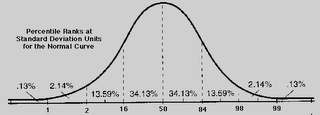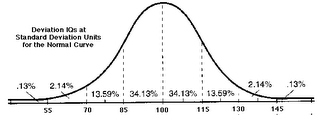Measures of Central Tendency In our last two sessions we have considered the tabular representation of data (frequency distributions) and the graphic representation of data (bar graph, histogram, and frequency polygon).
Comparing Measures of Central TendencyIn this lesson we will continue our investigation of descriptive statistics by looking at numerical methods for summarizing or representing data. We will start this activity by looking at measures of central tendency or averageness and then in our next lesson we will look at measures of variability or spreadoutedness.
We generally use one of three measures of central tendency: the mode, the median, or the mean. Review the following & click on this link for short cut calculations.
The
mode is the most frequently occuring measure or score (like the mode in fashion).
For the following set of 10 scores:
14, 18, 16, 17, 20, 15, 18, 17, 16, 17
The
mode is 17 as it is the most frequently occuring score (there are 3 17s in the set of scores).
The
median is the middle score in a distribution or the middle most score of the distribution. To calculate the
median just arrange the scores from smallest to largest (or from largest to smallest) and then count up to the middle score. If there are an even number of scores than the
median is one-half of the sum of the two middle scores (the average of the two middle scores).
For the following set of scores (already arranged in order of size):
10, 14, 16, 16, 19, 23, 27
The
median would be the fourth score as there are seven scores. The value of the fourth score is 16 so the
median of the scores is 16.
For the following set of scores (already arranged in order of size):
10, 14, 16, 19, 23, 27
The
median would be half way between the third and fourth scores as there are six scores. Half way between 16 (the third score) and 19 (the fourth score) is (16 + 19)/2 which is 17.5, so the median is 17.5
Mean for a PopulationThe
mean is a relatively simple concept and we intuitively know that the mean or average is the sum of all the values divided by the number of values.
Thus the mean of the five scores: 9, 4, 7, 7, 4 is 9 + 4 + 7 + 7 + 4 divided by 5 or 31/5 = 6.2
The statistical formula for the mean for a population is:
[FORMULA: mu equals summation X divided by N]
where
[SYMBOL mu] the Greek letter mu, is the symbol for the population mean
[SYMBOL sigma] is the summation sign and means that we should sum up what ever appears after the summation sign
[SYMBOL X] is the symbol for an individual score, and
[SYMBOL N] upper case N, is the symbol for the total number of scores in a population.
In English then, the formula for the mean for a population says sum up all of the individual scores ( [SYMBOL summation X]) and divide that sum by the number of scores ( SYMBOL N]).
Using this formula and a hand held calculator, find the mean for the following population of scores, which are the scores obtained by 15 seventh grade pupils on a science test:
Science Test Scores
17
23
27
26
25
30
19
24
29
18
25
26
23
22
21
The answer you should have obtaied for this set of scores is:
Where the answer is rounded off to three decimal places.
The formula for the mean which we have been looking at is for use with a set of scores. If we already have our scores in a frequency distribution then we have to modify the formula somewhat to account for all of the scores in the frequency distribution.
Consider the following frequency distribution of ages for children in an after school program. Note that we have added a column called fX or the score times the frequency of that score. For example, there are two eleven year olds so the fX for eleven year olds is 22, there are four ten year olds so the fX for ten year olds is 40. Also note that the sum of the fX column is recorded at the bottom of the column.
Frequency Distribution of Ages for Children in After School Program
Age
Frequency
fX
11
2
22
10
4
40
9
8
72
8
7
56
7
3
21
6
0
0
5
1
5
N =
25
216
The formula for the population mean for a set of scores in a frequency distribution is:
So the mean for the population of ages of childen in the after school program is:
Mean for a Sample
The mean for a sample of scores is calculated in exactly the same way as the mean for a population of scores. The only thing that differs is the symbol used to represent the mean. The symbol for the mean of a sample is x bar, that is an x with a bar above it. You can think of x bar as representing the average X or score. The formula for the mean for a set of scores in a sample is:
where
lower case n, is the symbol for the total number of scores in a sample
The formula for the mean for a set of sample scores in a frequency distribution is:







